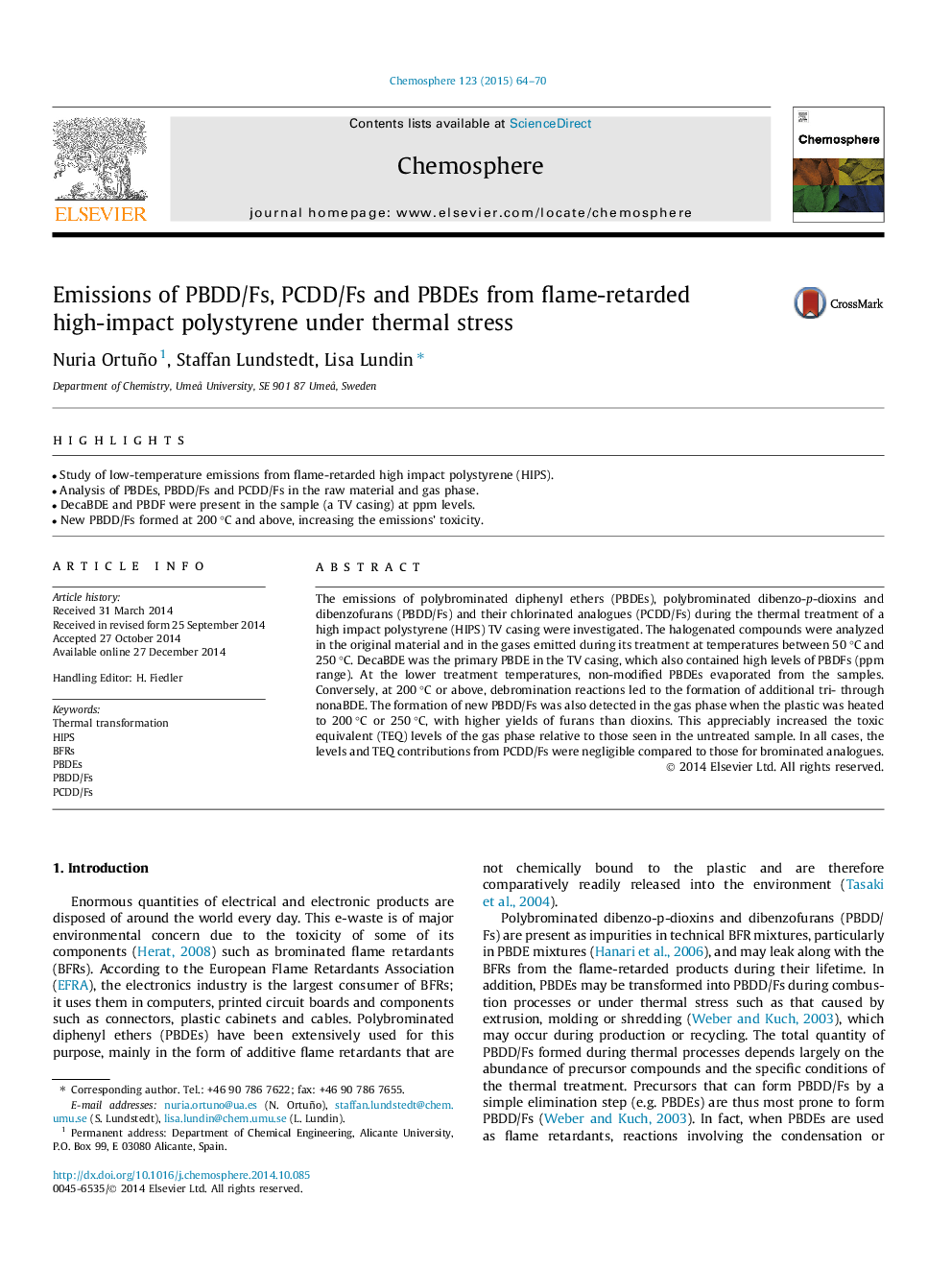| کد مقاله | کد نشریه | سال انتشار | مقاله انگلیسی | نسخه تمام متن |
|---|---|---|---|---|
| 4408583 | 1618848 | 2015 | 7 صفحه PDF | دانلود رایگان |

• Study of low-temperature emissions from flame-retarded high impact polystyrene (HIPS).
• Analysis of PBDEs, PBDD/Fs and PCDD/Fs in the raw material and gas phase.
• DecaBDE and PBDF were present in the sample (a TV casing) at ppm levels.
• New PBDD/Fs formed at 200 °C and above, increasing the emissions’ toxicity.
The emissions of polybrominated diphenyl ethers (PBDEs), polybrominated dibenzo-p-dioxins and dibenzofurans (PBDD/Fs) and their chlorinated analogues (PCDD/Fs) during the thermal treatment of a high impact polystyrene (HIPS) TV casing were investigated. The halogenated compounds were analyzed in the original material and in the gases emitted during its treatment at temperatures between 50 °C and 250 °C. DecaBDE was the primary PBDE in the TV casing, which also contained high levels of PBDFs (ppm range). At the lower treatment temperatures, non-modified PBDEs evaporated from the samples. Conversely, at 200 °C or above, debromination reactions led to the formation of additional tri- through nonaBDE. The formation of new PBDD/Fs was also detected in the gas phase when the plastic was heated to 200 °C or 250 °C, with higher yields of furans than dioxins. This appreciably increased the toxic equivalent (TEQ) levels of the gas phase relative to those seen in the untreated sample. In all cases, the levels and TEQ contributions from PCDD/Fs were negligible compared to those for brominated analogues.
Journal: Chemosphere - Volume 123, March 2015, Pages 64–70